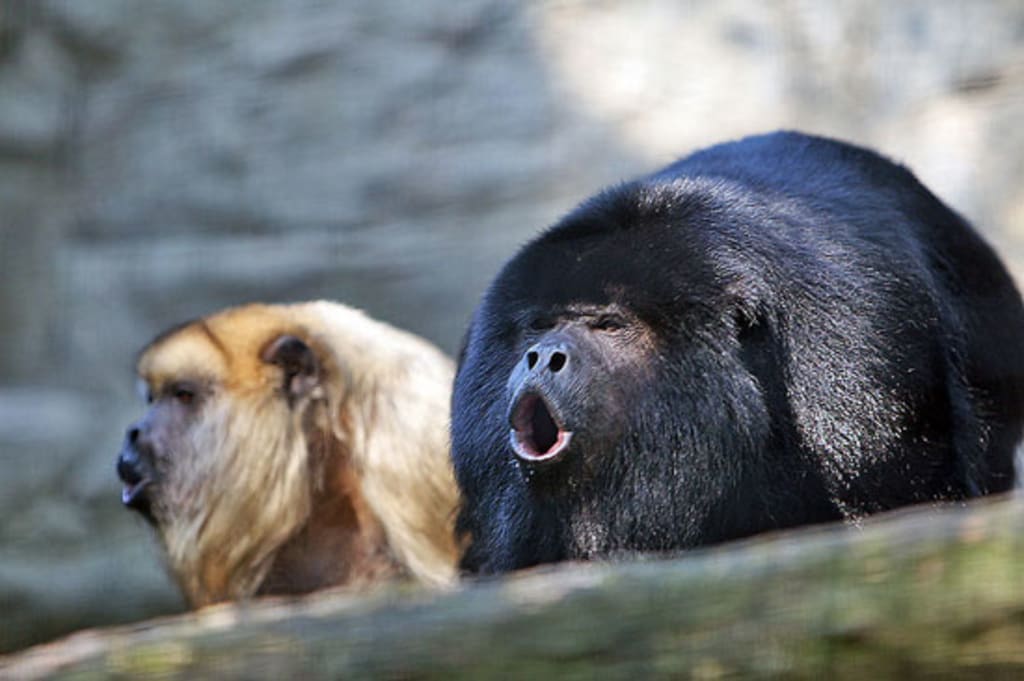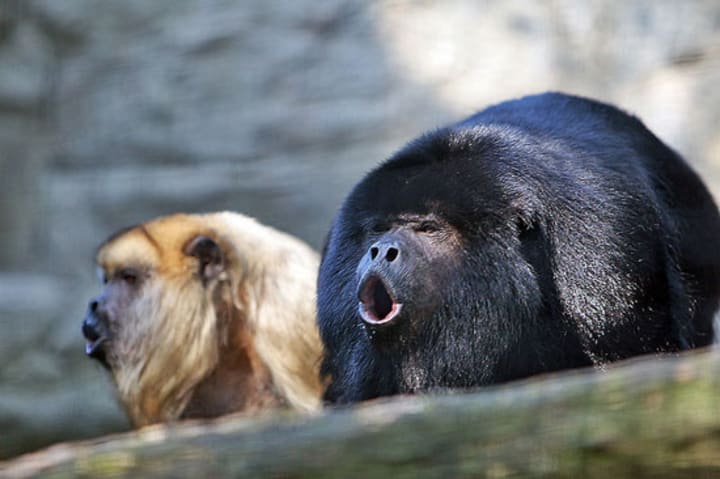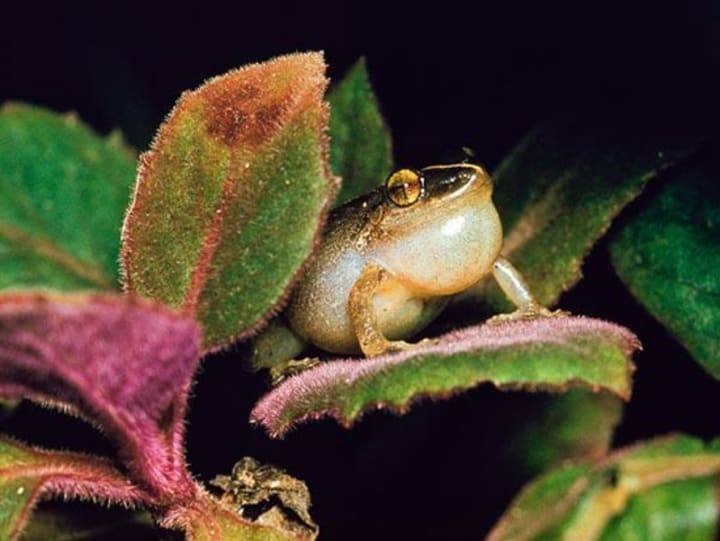The loudest animals on the planet
After the recent interesting discovery of a water beetle that makes noise with its "genitals", will the order of the world's noisiest animals be rearranged? Let's take a look at the noisiest 'knights' in nature according to National Geographic magazine.

1. Ocean singer, planet singer

The blue whale is the loudest animal on record, reaching a volume of up to 118 decibels. Blue whales do not sing complex ‘songs’ like humpback whales, but their low-frequency calls – below the human hearing threshold – can be heard from more than 500 miles away. Calculations in the 1970s by scientists Roger Payne and Douglas Webb suggested that blue whale songs could travel across the ocean.
Blue whales sing louder than a jet plane (140 decibels). The loudest human scream reaches just over 70 decibels. The threshold of sound that causes pain in humans is between 120 and 130 decibels. A few years ago, researchers realized that whales were reducing the frequency of their singing.
2. The loudest land species

The screamer monkey is the loudest land animal. Large populations of this species live in the rainforests of South America. Some say their screams are actually more like roars, and can be heard up to 3 miles away. The screamer monkey's scream has been measured at 88 decibels from 16 feet away, which is about the same as a subway train running on the tracks (95 decibels). The screamer monkey is second only to the blue whale in terms of loudness.
Research has shown that monkeys 'scream' using a U-shaped hyoid bone in the animal's throat. This bone doesn't actually hook onto any other bones, so it just seems to hang there. The exaggerated bone forms a throat pouch that helps resonate the scream before it breaks out through the animal's palate.
Monkeys scream for many different purposes, screaming to announce location, to protect territory, to protect friends, but humans are still unaware of their 'vocabulary'.
3. Still making noise while sleeping

When oilbirds return to their burrows to roost, the loudest flocks of birds ever recorded can deafen you. Oilbirds use echolocation to find their way through the pitch-black darkness of caves. Unlike the calls of bats, however, the squawks of oilbirds are within the human range of hearing. Individual birds can squawk at up to 100 decibels at close range, and a flock of thousands of oilbirds can add up to a terrifying volume.
Oilbirds appear to use echolocation only in their burrow homes and not in their nocturnal foraging. This may be because their sensitivity is not as high. A scientific experiment showed that oilbirds would headbutt 10-centimeter-wide plastic disks, but they could avoid 20-centimeter-wide and wider disks.
4. The Amphibian King of Noise

Only males of the common coqui frog sing, and their songs have been recorded at up to 100 decibels (measured at 1 meter), making them the loudest known amphibians. The nocturnal frog's song serves two purposes: to announce its territory to other males and to attract females.
In their native habitat in Puerto Rico, coqui frogs are considered part of the island’s natural heritage. However, in Hawaii, residents often lose sleep at night because of the noise they make, which is equivalent to running a lawnmower all night, according to the Hawaii Department of Agriculture.
5. Loudest explosion made by living creature

The pistol shrimp does not sing, chirp, scream, or whistle, but simply makes the loudest explosion ever made by any living creature. The noise of the pistol shrimp is enough to 'mask' submarines from sonar detection systems.
The pistol shrimp stuns its prey by rapidly closing its special pincers to shoot jets of water at 100km/h, creating a low-pressure bubble of air behind it. The bubble bursts, creating a mini-explosion of 200 decibels, stunning and killing its prey.
6. Amplify your singing voice with homemade speakers

The mole cricket Gryllotalpa vinae is the loudest insect. It uses its specialized forelimbs to dig out loudspeaker-shaped tunnels. Standing inside the excavated tunnel, the cricket can chirp loudly enough to be heard from 600 meters away.
A recording device placed 1 meter from the entrance of the cricket’s burrow recorded sounds as loud as 92 decibels, louder than a lawn mower. In fact, G. vinae cheats by using its burrow to amplify the actual sound emitted from its body, converting 30% of its energy into amplified sound.
7. Making noise with "precious thing"

While not the loudest animal in nature on a pure decibel basis, the water beetle Micronecta scholtzi does make the loudest sounds relative to its body size, according to a study published in the journal PLoS ONE earlier this month.
Experts and evolutionary biologists in Scotland and France have recorded the water strider’s song at 105 decibels, the equivalent of a sledgehammer hitting the surface at arm’s length. Although the sound from the bottom of the pond is much reduced by the time it reaches the surface, the water strider’s song is still loud enough to be heard by a person standing on the pond’s edge.
Remarkably, water striders make noise by rubbing their penises against their abdomens, a process similar to how crickets 'sing'. Genital noise production is relatively rare in the animal kingdom, but animals have evolved hundreds of different ways to amplify their 'singing'.
8. Bulldog Bat

The greater bulldog bat, native to the Caribbean, uses echolocation to find food, like all bats. However, instead of eating the familiar insects, it eats fish. It can emit sounds that travel through both air and water, reaching up to 140 decibels. These particularly loud sounds are ultrasonic, meaning they are outside the range of human hearing.
9. Kakapo Bird

The kakapo, also known as the owl parrot , is the loudest bird. The mating call of this New Zealand native can reach up to 132 decibels. The nocturnal kakapo is the heaviest parrot in the world, weighing in at 4.85 pounds (2.2 kg) for males, and is also the longest-lived bird known, living to be 90 years old.
About the Creator
HK Decor
Telling stories my heart needs to tell <3 life is a journey, not a competition
If you like what you read, feel free to leave a tip,I would love some feedback
https://s.shopee.vn/7fFUMxnnBx?share_channel_code=8
Enjoyed the story? Support the Creator.
Subscribe for free to receive all their stories in your feed. You could also pledge your support or give them a one-off tip, letting them know you appreciate their work.






Comments
There are no comments for this story
Be the first to respond and start the conversation.